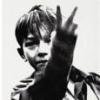-
Posts
28,266 -
Joined
-
Days Won
637 -
Feedback
100%
Content Type
Forums
Event Guide
News & Articles
Source Guidelines and Help
Gallery
Videos Directory
Source Store
Everything posted by Chalky
-
send him my best Tone!
-

(new) Northern Soul Top 500 Book Launch Event
Chalky replied to Andybellwood's topic in All About the SOUL
It's bloody hard work trying to get the scene to progress, Lifeline is IMHO the best progressive all-nighter with the countries top soul DJ's and guests but struggle to compete with the likes of Kings Hall Stoke!!! 100 Club, Wilton and Burnley the same. The more forward looking crowd is not that great in numbers but the records do in time filter down to the more retro events. Even Kings Hall now has the likes of Butch and Mick H djing there so inroads are being made but you can't do it over night. It takes time, effort and perseverence. Maybe in time more of the oldies only crowd will progress if they hear enough "unfamiliar" sounds that they like at places like Kings Hall. Maybe I should do a book of the top 500 "newies" -

(new) Northern Soul Top 500 Book Launch Event
Chalky replied to Andybellwood's topic in All About the SOUL
So you would sooner the good people of soul source rise up and bring him down He's hardly doing anything bad or evil is he. In fact he's providing entertainment that is popular with 100's of soulies. Like I said not for me so I go somehwere that is in line with my thinking and leave what Kev does to those that enjoy it. Tell you summat I bet you every other all-nighter promoter wishes they could get the numbers throught the door Kings Hall does and have an atmosphere like there is there too They also say there's no such thing as bad publicity, Kev must be loving all this I bet a fair few will be buying a copy to see what all the fuss is about -

(new) Northern Soul Top 500 Book Launch Event
Chalky replied to Andybellwood's topic in All About the SOUL
He's seen an opportunity and gone for it, some on the scene actually like and want "nostalgic tat", there must be a demand or he wouldn't sell the stuff. Whether I agree with it or not is immaterial but that sort of stuff not for me but I don't go around slagging him off, I just don't buy it. What he sells doesn't affect me and in reality it's not having a detrimental effect on the scene. He's does put something into the scene as well, whether you agree or not. He promotes the biggest all-nighter on the scene and also various other events that all seem popular to some. Again some of them not my cup of tea so I vote with my feet and go elsewhere to the events that are my cup of tea. No point in slating him for promoting the events as they are pretty popular with plenty of people and who am I to tell them they shouldn't attend these events as Kev is only promoting them in the opinion of some, to milk the scene. Whether I agree with what he does is again irrelevant. Publicly slagging him off on a forum won't make the slightest bit of difference, I just get on with my own thing and leave what Kev does to him and those who enjoy what he does. Radio shows, promoting books whatever he or anyone else does to make some money out of the scene still require some fiancial outlay. At the end of the day the books must be selling sufficient quantities to warrant an update. Again doesn't interest me the follow ups so I haven't bought a copy, infact I don't even have the first, I read it at an ex's one weekend so didn't bother to buy one. Right back to doing my own thing, sorting some records for Skeggy!!!! -
Remember it well Kev. Got it on tape myself. Quality of the acetate wasn't too great if I remember rightly?? Seem to remember this being talked about a while ago and sure John Parker said he's played it. If not in John's ownership then dunno where it is.
-

(new) Northern Soul Top 500 Book Launch Event
Chalky replied to Andybellwood's topic in All About the SOUL
No matter what Kev did or does, right or wrong, folk on here will still have a dig and slag him off!! Plenty of others who have attempted and still attempt to make money out of the scene. I for one would love to make a living out of the scene and I dare say so would many of those slagging Kev off. -
on diggin' bit further the Salem outfit consisted amongst the group Earl and Marshall Carter. Teardrops a terrible record too IMHO.
-
Had a feeling they were one and the same but not too sure at the same time. Soul Harmony does list George Brown as being a member though, SH not always right either. I did have a scan of the Salem 45 but can't find it. Henry Boatright is the lead on SBI.
-
think so.... could be wrong tho'!
-
I can't now, goes on for ages then asks me to save a php file to PC
-
a pianist by all accounts..... Marlowe Morris was an in-demand pianist who played on the recordings of some of the greatest jazz horn soloists, including Ben Webster and Lester Young, as well as with boogie-woogie and classic blues artists such as Big Joe Turner and Jimmy Rushing. He was also an innovative and much-copied stylist on the less than portable Hammond organ. As a youngster, he fiddled around with a few instruments before finally settling on the keyboards, learning drums, harmonica, and ukulele. As a pianist, his first professional job was with singer June Clark for two years beginning in 1935. He then worked as a solo pianist for several years before joining the combo of tenor sax great Coleman Hawkins from 1940 through 1941, when he joined the Army. Following a stint in the service, he worked with Toby Browne, Al Sears, drummer Sid Catlett, and the great guitarist Tiny Grimes, as well as leading his own trio, all in the first half of the '40s. He then began tickling the ivories only part-time, following a grand musical tradition and taking a day job in the post office to try and make ends meet. From 1949 he returned full-time to music, mainly as a solo organist. In the mid-'60s he led the Marlowe Morris Trio featuring tenor saxophonist Julian Dash. The Morris album Play the Thing on Columbia nabbed the Grand Prix du Disque award from the Hot Club de France. Perhaps the best exposure the pianist ever received was his role in the film Jammin' the Blues in 1944. One of the better jazz films from the swing era, it was filmed in Hollywood and features the pianist in very good company indeed, including players such as trumpeter Harry Edison, tenor men Lester Young and Illinois Jacquet, guitarist Barney Kessel bassist Red Callender, drummer Sid Catlett, and vocalist Mary Bryant (vocal). Marlowe Morris was the nephew of Thomas Morris, a cornet player and bandleader. ~ Eugene Chadbourne, All Music Guide
-
priviliged me? no different to anyone else, still have to look for 'em!! seen a few between the price I said, £40-£60 in last few months and didn't think it was selling for that much more at the time anyway. still don't think it's worth anymore than that to be honest for the multicoloured issue. If I see one at £40 again, I'll buy it and sell it for £70
-
is this the group you are looking for Simon? https://www.brumbeat.net/secondci.htm and you can get the single on ebay in a few days https://cgi.ebay.co.uk/Northern-Soul-%2FMod...7QQcmdZViewItem or a tenner on JM's site
-
watched this t'other night, powerful and very funny as well at times. Great film and highly recommend.
-
Revival, it's being hammered, seem to hear it all over these days!!! Dunno why anyone would pay upwards £70m for the multicoloured issue!! Had the chance of one at £40 not so long ago.
-
1. Real, as far as I'm aware not booted. 2. Same group 3. Odd spin owt, nothing serious tho' 4. £50 I think. Listed one some time ago for around that figure. hope that helps.....
-
it's up and down Carms
-
Not heard it, I mailed the guy and he gave me his number to ring him up to listen over the phone. never bothered at the time.
-
it was played at the Mecca as a new release apparently! the multicoloured I would have thought should be about £40-£60. Red and White harder and seen listed at around £150.
-
I've said all alnong Stevie that an all-nighter should start at midnight with a warm up at a local soul night, that way everyone wins! Plus the fact everyone is straight on the floor at midnight cause they are already buzzin' and rarin' to go instead of some all-nighters taking three hours to warn up with the early door DJ's playing to empty floors. However there doesn't appear to be too many all-nighter goers on SS. From close on a 1000 viewers only 80 seem to attend nighters, thought everyone on SS went to nighters
-
you could also e-mail the department of health and the secretary of state for health....doubt you will get a personal reply but you never know dhmail@dh.gsi.gov.uk
-
sign the petiton on downing street petition site,, few other petitions relating to the ban on there as well.... https://petitions.pm.gov.uk/smokelaw/
-
I'm an ex smoker and can't stand them but on reflection the ban is slowly doing more to kill of northern soul than all the politics and in fighting. Some places severely lacking in atmosphere with more outside than in I for one would welcome the ban being over turned. maybe we should petition the government...or at least have an area inside the room set aside for smokers.
-
Saturday or Sunday....I mean Friday or Saturday Ken....time for some sleep I think, been up to long I reckon




